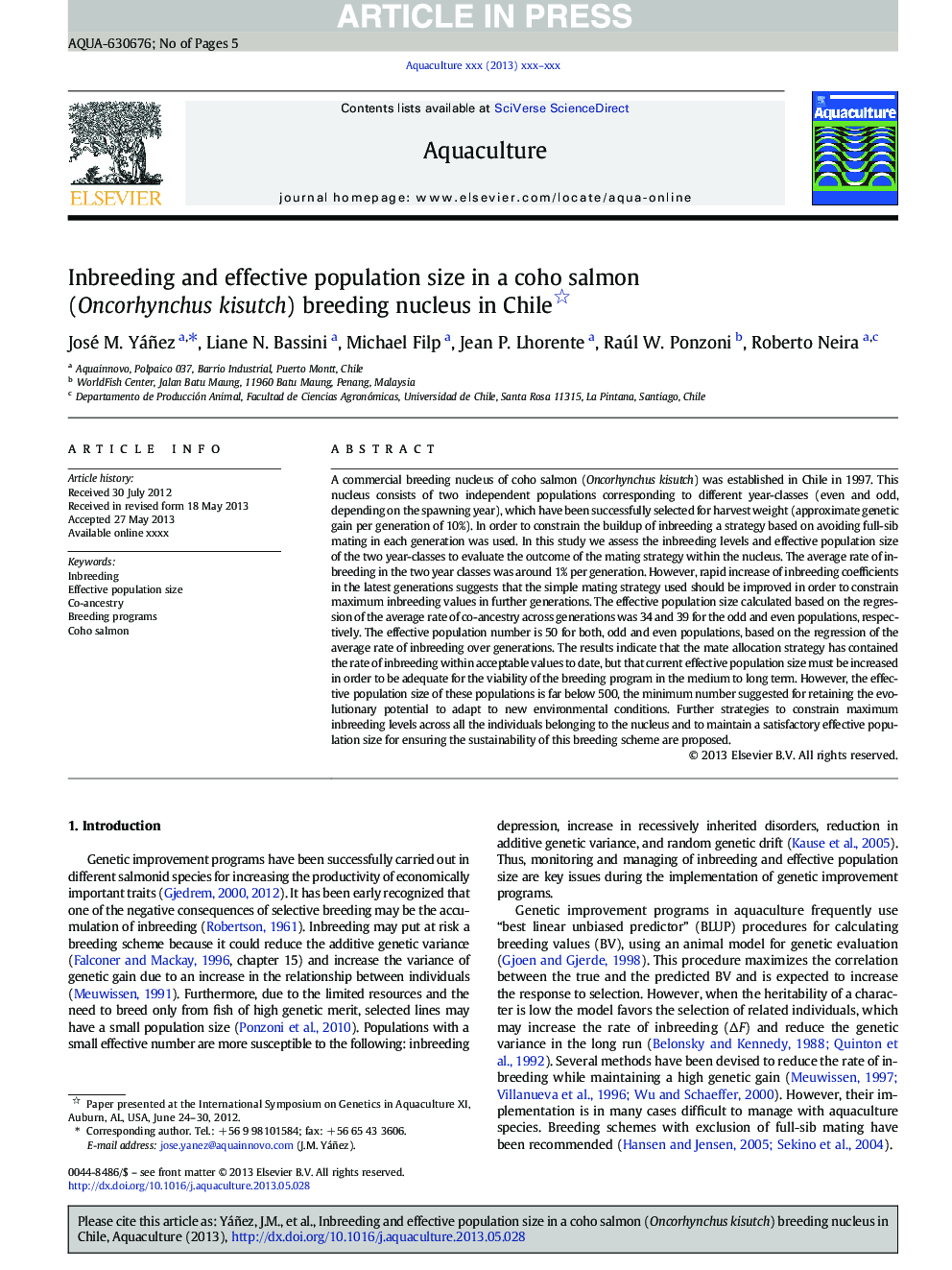| Article ID | Journal | Published Year | Pages | File Type |
|---|---|---|---|---|
| 8495287 | Aquaculture | 2014 | 5 Pages |
Abstract
A commercial breeding nucleus of coho salmon (Oncorhynchus kisutch) was established in Chile in 1997. This nucleus consists of two independent populations corresponding to different year-classes (even and odd, depending on the spawning year), which have been successfully selected for harvest weight (approximate genetic gain per generation of 10%). In order to constrain the buildup of inbreeding a strategy based on avoiding full-sib mating in each generation was used. In this study we assess the inbreeding levels and effective population size of the two year-classes to evaluate the outcome of the mating strategy within the nucleus. The average rate of inbreeding in the two year classes was around 1% per generation. However, rapid increase of inbreeding coefficients in the latest generations suggests that the simple mating strategy used should be improved in order to constrain maximum inbreeding values in further generations. The effective population size calculated based on the regression of the average rate of co-ancestry across generations was 34 and 39 for the odd and even populations, respectively. The effective population number is 50 for both, odd and even populations, based on the regression of the average rate of inbreeding over generations. The results indicate that the mate allocation strategy has contained the rate of inbreeding within acceptable values to date, but that current effective population size must be increased in order to be adequate for the viability of the breeding program in the medium to long term. However, the effective population size of these populations is far below 500, the minimum number suggested for retaining the evolutionary potential to adapt to new environmental conditions. Further strategies to constrain maximum inbreeding levels across all the individuals belonging to the nucleus and to maintain a satisfactory effective population size for ensuring the sustainability of this breeding scheme are proposed.
Related Topics
Life Sciences
Agricultural and Biological Sciences
Aquatic Science
Authors
José M. Yáñez, Liane N. Bassini, Michael Filp, Jean P. Lhorente, Raúl W. Ponzoni, Roberto Neira,
